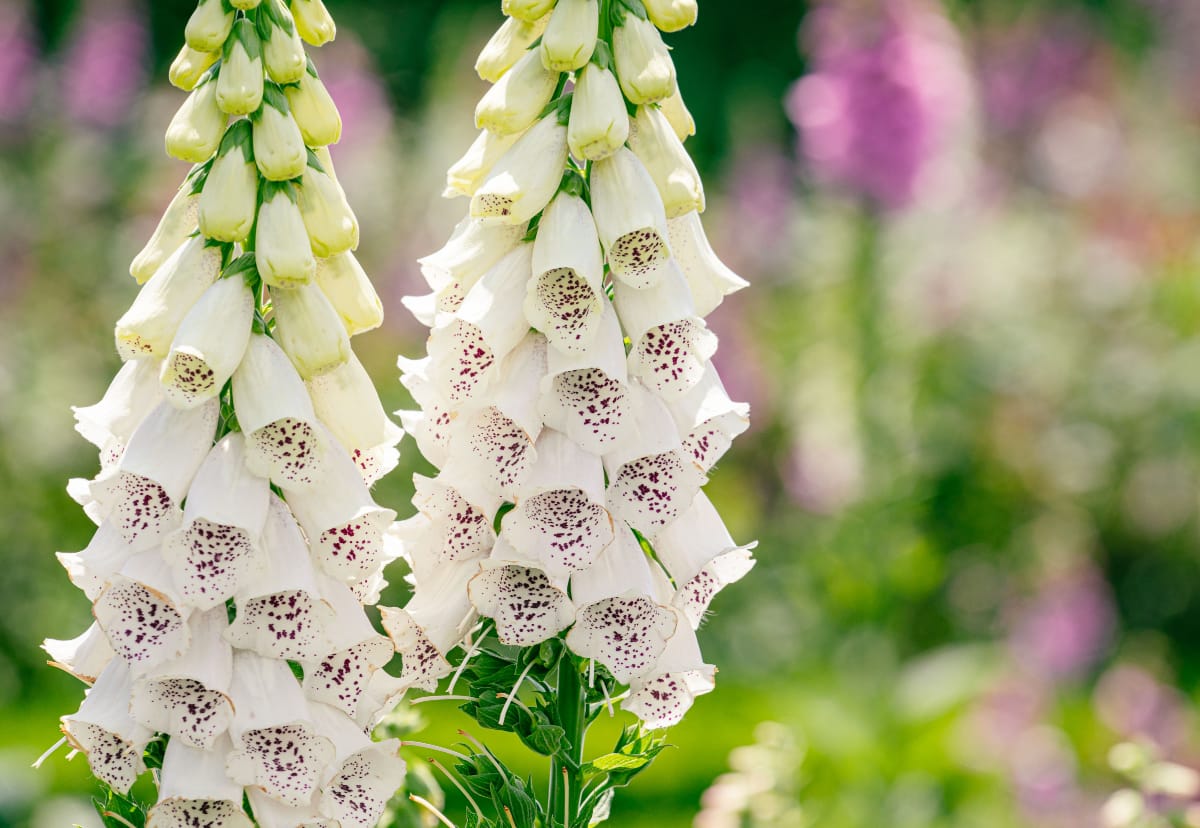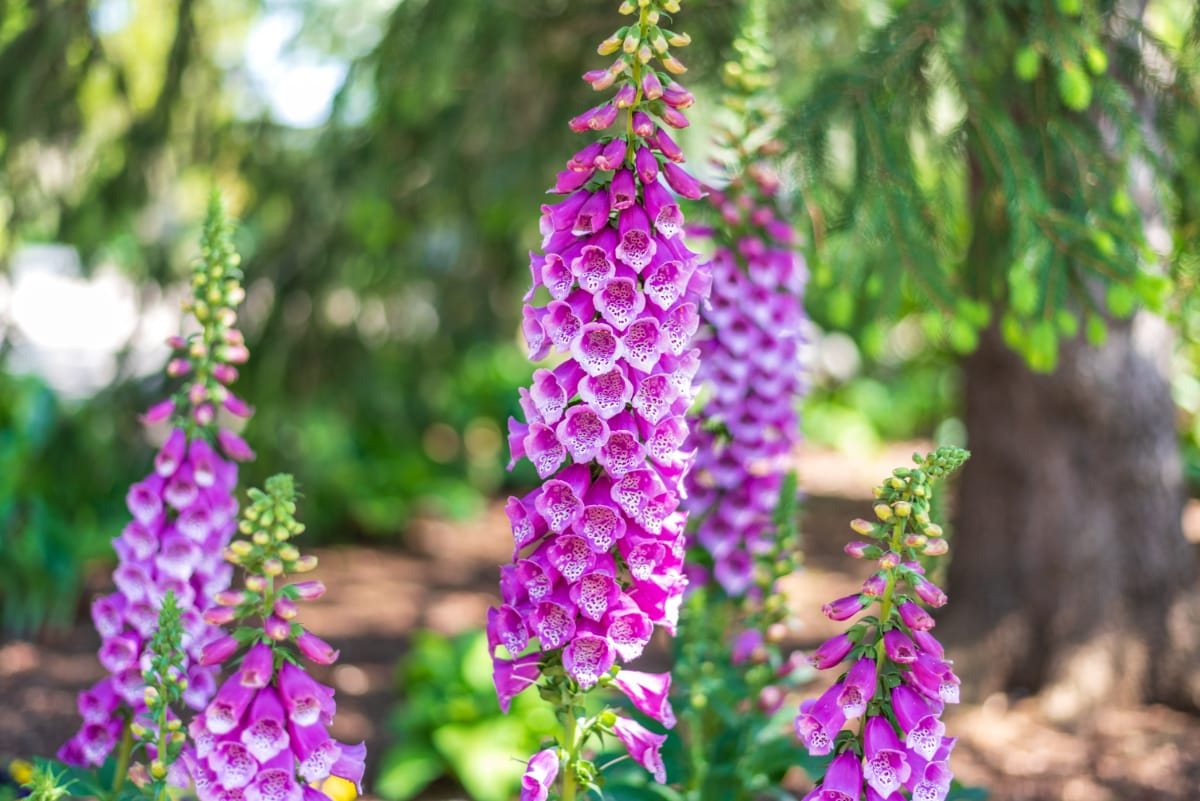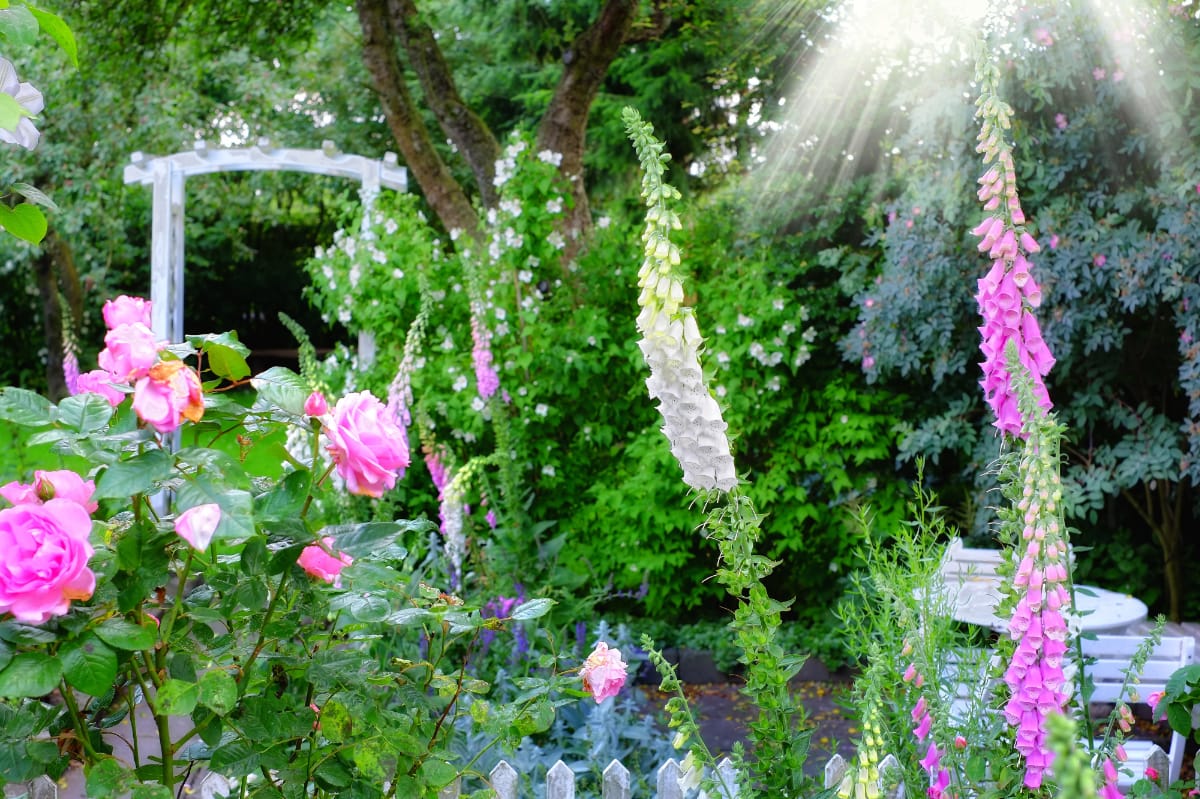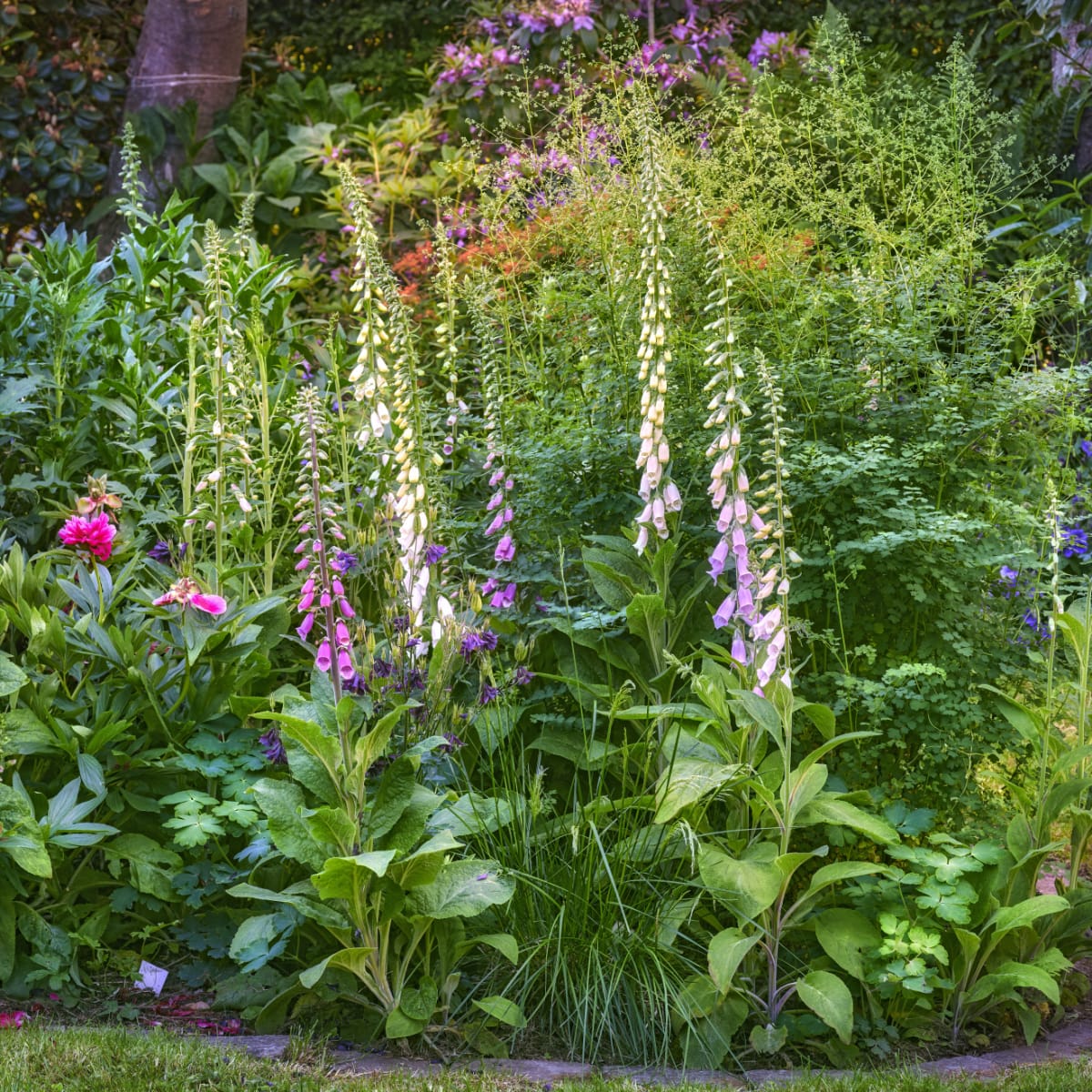Nothing in Basket!
About the Author & Content Disclaimer
The advice in this post is based on 10+ years of hands-on experience testing seeds in our sandy Suffolk Garden.
While I love sharing my journey and the things I discover, please understand that I am not a certified professional in gardening or wildlife. I ground my content by deep-diving into reliable books and expert resources, but please use my advice only as a guide for your specific garden.
I use and sell the same UK-sourced, wildlife-approved seeds in my own garden that you see throughout this site. Shop the seeds here.
If you notice any inaccuracies or have additional insights to share, please feel free to contact me via this website's contact forms.
Sow: June, July & August
Plant: March, April & September
Flowers: May, June & July
Cut back perennials: October
Loved by: Bees
Follow these easy steps when planting foxgloves:
Foxgloves are a popular choice for cottage gardens and wildlife-friendly planting schemes. Their tall spikes of bell-shaped flowers with spotted centres are a real eye-catcher, and they provide much-needed nectar for bees. Most foxgloves are biennial, meaning they grow roots and leaves in their first year, then flower and set seed in their second year before dying. However, there are some varieties of foxglove that are perennial, meaning they will live for more than two years.
Foxgloves are poisonous to humans and animals. All parts of the plant are toxic, and even small amounts can be harmful. If you have foxgloves in your garden, be sure to wear gloves when handling them and keep them out of reach of children and pets.
Here are some tips for growing foxgloves safely:

I allow my foxgloves to self-seed, and I also collect some of the seeds to start them off in pots. This allows me to place the foxgloves exactly where I want them, or to fill in any gaps in my garden.
Foxgloves thrive in moist but well-drained soil in full sun to full shade. Some varieties are more shade tolerant than others.
Foxglove Digitalis Purpurea performed well during the heat wave of 2022. The foxgloves that were in full shade within my garden even survived without needing to be watered.
Buy foxglove seeds from Christinas shop
Foxgloves are beautiful flowers that are a popular addition to many gardens. They are relatively easy to care for, but there are a few things to keep in mind to ensure that they thrive.
One important thing to do with foxgloves is to deadhead spent blooms. This means removing the spent flowers from the plant. You can do this by simply pinching them off with your fingers. Deadheading helps to encourage the plant to produce more flowers.
If you want to let your foxgloves self-seed, you can do so by leaving the spent blooms on the plant. The seeds will eventually fall off and germinate the following spring. However, if you want to control where the foxgloves grow, you can deadhead the spent blooms to prevent them from setting seed.
Biennial foxgloves only flower in their second year of life. After they have flowered, you can dig them up and add them to your garden compost. Perennial foxgloves, on the other hand, will flower for several years. After they have flowered, you can cut them back in October. This will help to encourage new growth in the spring.
If you are gardening with wildlife in mind, you can let your foxgloves go to seed and leave the flower spires to die back on their own. The flower spires provide a great environment for bugs to hide in over the winter. As the spires rot, they will also add nutrients to the soil. This is a great way to help wildlife and improve the health of your garden at the same time.
Here are some additional tips for growing foxgloves:
Foxgloves thrive in dappled shade, similar to their natural habitat in woodland clearings or at the foot of native hedges. When planting foxgloves, consider creating an environment that mimics their natural surroundings.
While most foxgloves prefer partial shade, Digitalis parviflora and Digitalis obscura need full sun to thrive. Foxgloves will grow in any soil type, but they prefer well-drained, moist soil. Avoid planting foxgloves in very wet or very dry soil.
Digitalis purpurea is a native biennial and may not flower in the year you plant it. If you want your foxgloves to self-seed around the garden and flower every year, you will need to plant foxgloves two years in a row.
Plant foxgloves in spring or autumn, directly into the garden. Water in well.

Foxgloves are a prolific self-seeder, and the seeds can be easily collected and scattered directly where you want them to grow. Alternatively, you can sow the seeds in a tray of seed compost and place a propagator lid over the tray. I usually start mine off in a window that doesn't get direct sun. Seedlings grown in trays or pots should be over wintered in a cold frame, before planting out in the following spring.
Here are the steps on how to sow foxglove seed:

Foxgloves are a low-maintenance plant that will flower and seed without any intervention from you. They are a great choice for gardeners who want to sit back and watch nature work its magic.

Foxgloves are generally trouble-free plants, but they can be susceptible to attack from slugs and snails, especially when they are young. However, it is important to resist the urge to use slug pellets or other pesticides, as these can also harm other wildlife. The caterpillars of some moths also eat foxglove leaves and flowers, but these caterpillars are food for baby birds in spring, so it is best to leave them alone. By letting the caterpillars and slugs live, you can help to improve the eco-system in your garden.
In 2023 I had a massive infestation of aphids, I waited for the aphids natural predators to arrive, but by the time ladybird babies hatched it was too late for the foxgloves, all the life had been sucked out of them. The lacewings which also enjoy eating aphids arrived a month later, at which point the ladybirds had pretty much clear the garden of aphids. There certainly seemed to be a miss-match between the aphids and their predators the ladybird and the lacewings arriving.

It is far cheaper and more rewarding to grow Foxgloves from seed. You can purchase foxglove seeds from our online shops. - Click here to buy foxgloves seeds now.
Nothing in Basket!
